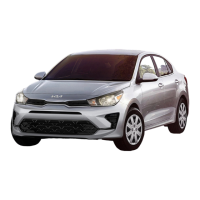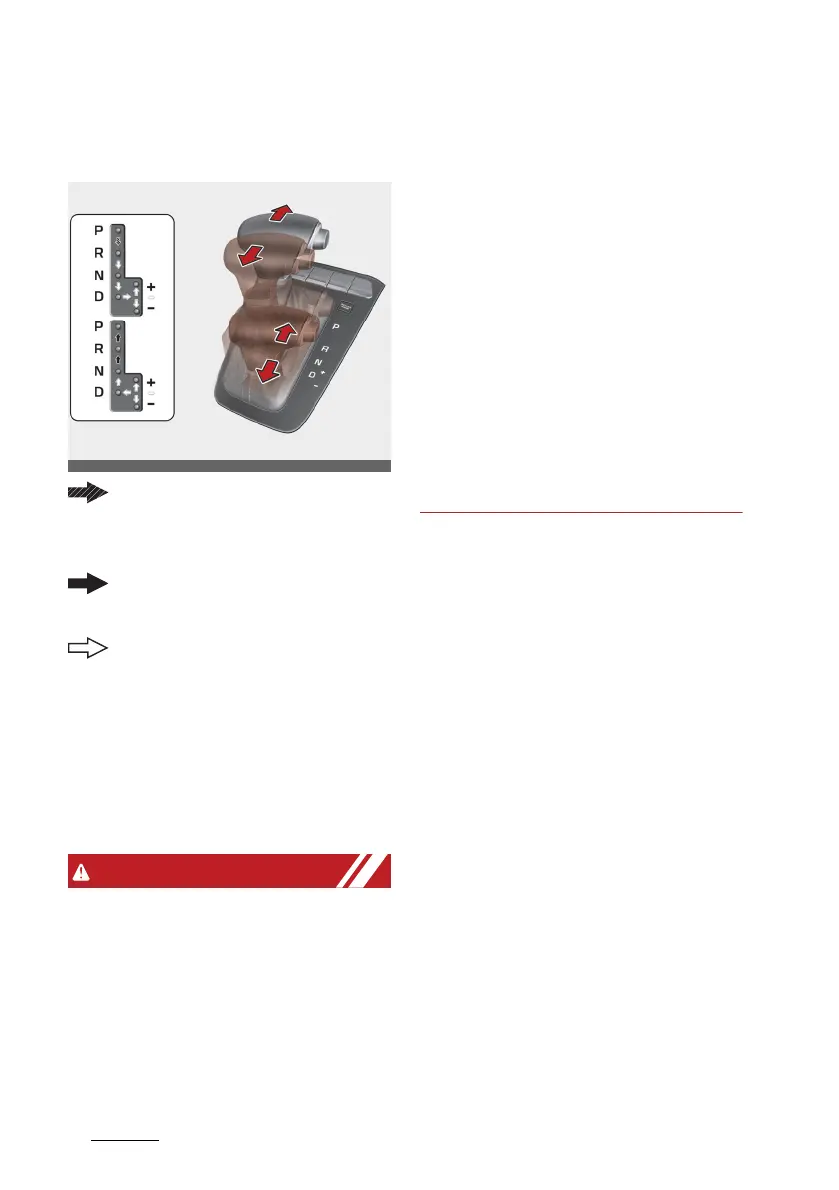Driving your vehicle
426
Dual Clutch Transmission (DCT)
Dual Clutch Transmission (DCT)
(if equipped)
Depress the brake pedal and
the lock release button when shift
-
ing.
Press the lock release button
when shifting.
The shift lever can be shifted
freely.
* To move the shift lever from/to P
(Parking) or between R (Reverse)
and D (Drive), you must depress
the brake pedal for the vehicle to
stand still.
To reduce the risk of serious injury
or death:
䳜 ALWAYS check the surrounding
areas near your vehicle for peo
-
ple, especially children, before
shifting a vehicle into D (Drive) or
R (Reverse).
䳜 Before leaving the driver䳓s seat,
always make sure the shift lever
is in the P (Park) position, then set
the parking brake, and place the
ignition switch or ENGINE START/
STOP button in the LOCK/OFF
position. Unexpected and sudden
vehicle movement can occur if
these precautions are not fol
-
lowed.
䳜 Do not use engine braking (shift
-
ing from a high gear to lower
gear) rapidly on slippery roads.
The vehicle may slip causing an
accident.
Dual clutch transmission operation
The dual clutch transmission has 7
forward speeds and one reverse
speed.
The individual speeds are selected
automatically when the shift button
is in the D (Drive) position.
䳜 The dual clutch transmission can
be thought of as an automatically
shifting manual transmission. It
gives the driving feel of a manual
transmission, yet provides the
ease of a fully automatic trans
-
mission.
䳜 When D (Drive) is selected, the
transmission will automatically
shift through the gears similar to
a conventional automatic trans
-
mission. Unlike a traditional auto
-
matic transmission, the gear

